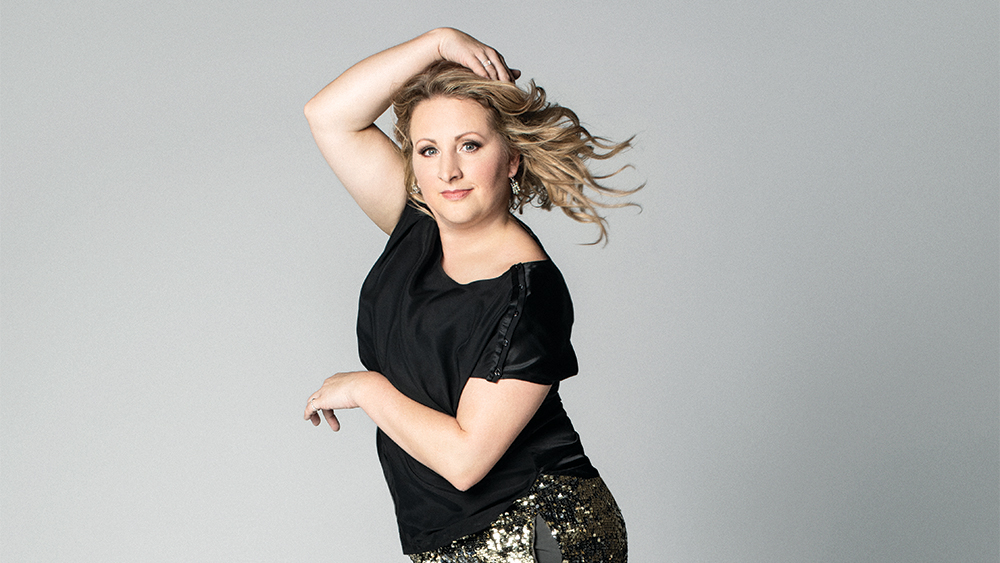‘So You Think You Can Dance’ Choreographer on Becoming ‘Teacher, Coach, Therapist’ for Reality Show Dancers
LOS ANGELES (Variety.com) – “So You Think You Can Dance” choreographer Mandy Moore has made stars out of countless contestants with her award-winning routines. But when Emmys season rolls around, the question becomes “So You Think You Can Choreograph”?
Since the show began in 2005, it has scored 38 choreography nominations between 15 choreographers. Six of them are Moore’s, including one this year for the contemporary number “To Make You Feel My Love,” featuring Robert Roldan and Taylor Sieve.
What was special about “To Make You Feel My Love”?
I had Robert and Taylor — both incredibly accomplished, beautiful dancers — and it was one of those songs that people know and like, and it was an acoustic version of it, and I was feeling the flow that week. I was emotional that week, and it was the right trifecta of artists and song and moment for me.
Does it get competitive between the choreographers on the show?
Most of us are highly competitive with ourselves. We’re always trying to outdo the number you’ve done before. There’s probably always some healthy competition. Any time I look at one of Travis [Wall’s] numbers, I think, ‘That was amazing!’ And then it inspires me to want to do something amazing. And Mia [Michaels] has won tons for the show as well, and she’s doing incredible stuff. I’m excited for Chris Scott. I want to eat the same creative cereal that Chris is because I’m competitive with that creativity 100%.
How is choreographing for TV different than stage?
You have to understand the frame when you’re choreographing for TV and understand that big shapes and dynamic shapes look good on television. It might work for stage, but it doesn’t necessarily work for TV. That’s something that I definitely learned over the years. I study my work a lot. I’ll watch it and try to understand why something resonates and why something doesn’t.
What do you do when you’re paired with a dancer that isn’t skilled in a particular style?
That’s all part of the show, is asking these dancers to do something they’ve never done before, and as a choreographer, you become teacher, you become coach, you become therapist. There’s many times where I’ve had hip hoppers who have never taken their shoes off, and they have to do contemporary, and on our show, the time is super limited. We only get about six hours total with them, so you have to be very clear with what you’re trying to teach them and also ride that line of giving them enough to challenge them but not so much that they’re gonna drown in it. Because sometimes if you’ve never done something before, you can mimic it up to a point, and then you look like you’re flailing around. I try to understand how coordinated the dancer is. Can I get them to understand the style with little to no experience in it? And then how do I also still have a little artistry and creativity and help them, as performers, grow and emote to the style.
How much of these nominations has to do with the dancers, lighting, costuming, etc.?
Ultimately, dance is a visual art form, so everything you see about it informs what you feel from it when you watch. So that same number that Robert and Taylor did, on other dancers, may not have resonated in the same way. Who knows if it would have been better or worse because art is subjective. In that moment, that number was created for those two dancers. Obviously, if someone’s more experienced, then it’s stronger and it’s probably gonna be better.
How do you balance being tough on the dancers and making sure they aren’t discouraged?
Some dancers like to be held accountable where others need more coddling, or they need to laugh a little bit even though it’s serious, and my job as a choreographer is to figure all of that out and look at the dancers. I’ve always been a big fan of holding people accountable because people rise to the occasion.
How is choreographing for “” different than “Dancing with the Stars?”
They’re incredibly different. On “Dancing with the Stars,” I’m usually in charge of doing the big opening numbers, and I deal with the part of the equation that is not on “So You Think,” which is the celebrity on “Dancing.” It’s a very different tone of a show as well, so sometimes it’s a bit more about the production and the numbers of people that are in the frame, whereas with “So You Think” I get to do the more emotional, or I get to try to do more difficult choreography.

